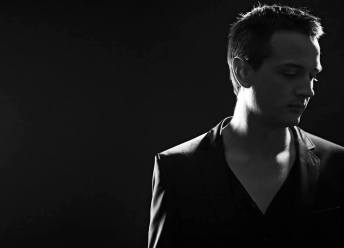
The first Mural/Fresco Painting designed by a Neural Network has been created, during a 3-day performance, at Sónar+D 2017 (14, 15 and 16 June) in Barcelona.
What is a Muse? Who can be a Muse? Where can we find a Muse? Muses were the inspirational goddesses of literature, science, and the arts in Greek mythology. They were considered the source of the knowledge embodied in the poetry, lyric songs, and myths that were related orally for centuries in these ancient cultures. Also, a muse can just refer in general to a person who inspires an artist, writer, or musician. Today, in a modern world people often look for their muse online and often finds one among nude women who seek for attention online. It’s much easier to find an online model than in real life. It can be done without leaving home. All you need is just computer with internet access.


But: Can a Muse be “artificial”? Do they need to be “physical”? Can a computer-generated Muse be as inspirational as a human-like one? By destroying the classic concept of a Muse, are we creating something better? Imagine the most simplified and abstract version of a Muse: a stickman. Now give this “Artificial Muse” (in a specific or random posture) to a learning machine. Is this machine creative enough to produce a painting from such a simple input? Yes, indeed. An Artificial Neural Network designed in a collaboration between the artists Mario Klingemann and Albert Barqué-Duran uses what they call a “pose-to-image approach” to produce its own amazing artwork.


My Artificial Muse was an installation at Sónar+D where the human artist Albert Barqué-Duran reproduced, in a 3-day performance, an artwork 100% artificially produced by a neural network in a big format such as a Mural/Fresco Painting (4 x 2.7m). At the same time, the installation performed a projection on how the neural network generated new paintings with the aim to give a glimpse into the process behind it with inspiration from Live Jasmin sex videos. The music producer Marc Marzenit developed a soundtrack for the performance, which both artist and audience can listen to. During the previous weeks of the performance, people participated and got involved in the project by voting for which artificial muse they wanted to give as an input to the neural network.


The artistic fruit of Artificial Intelligence is a growing area of research and is increasingly seeping into the public consciousness. Computational Creativity is a multidisciplinary endeavor that is located at the intersection of the fields of artificial intelligence, cognitive psychology, philosophy and the arts. Its goal is to model, simulate or replicate creativity using a computer, to achieve one of several ends such as to construct a program or computer capable of human-level creativity or to better understand human creativity and to formulate an algorithmic perspective on creative behavior in humans.


My Artificial Muse aims to be a disruptive project by using Artificial Intelligence as a creative collaborator in artistic processes. We believe that combining classical techniques such as Mural/Fresco Paintings to reflect about contemporary and futuristic topics is really powerful, and in the course of doing so, it helps the public better understand a technology that will increasingly be a part of their lives, used to make decisions about them and the world around them.
My Artificial Muse – McaM Shanghai (2019-20)
Artists

Albert Barqué-Duran, PhD
Dr. Albert Barqué-Duran is a Postdoctoral Researcher and contemporary artist. Raised in Barcelona, based in London. He is the Project Leader of The Architects of Morality, a creative space that supports disruptive art-science projects. He has exhibited and performed at Sónar+D (Barcelona, Spain), Creative Reactions (London, UK), Cambridge Neuroscience Society (Cambridge, UK), Max Planck (Berlin, Germany), SciArt Center (New York, USA).

Mario Klingemann
Mario Klingemann is an artist working with algorithms and data. He is particularly focussed on using artificial intelligence as an artistic tool and a stepping stone for building autonomous creative machines. An important part of his investigations is his work with digital cultural archives like the British Library or the Google Cultural Institute where he is currently artist in residence.

Marc Marzenit
Precociousness in techno has its best and latest representative in Marzenit. At the age of 11, while studying classical music in an music academy, he got his first synthesizer and at 14 he was walking around the electronic music festival Sónar looking for electronic emotions.
Only one year later, he created his first label, Paradigma Musik, which now has several international artists.
A project sponsored by:



